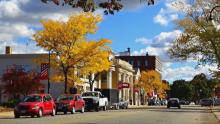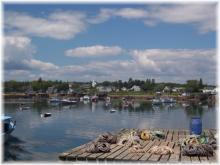Sanford, Maine, Moves Muni Project With TIF
The City of Sanford, Maine, is putting the final pieces of funding in place to move forward with its ambitious 45-mile fiber optic build, SandfordNet, the largest fiber infrastructure build proposed in Maine to date.
Along with two other funding sources, the project will be financed by an existing Tax Increment Financing (TIF) district in downtown Sanford. According to the Journal Tribune, the project will cost $2.02 million in total to complete; that figure is higher than initially projected, due in part to fees to access utility poles.
The SanfordNet project involves building what the city describes as a “fourth redundant ring” that will attach to the statewide fiber loop known as the “Three Ring Binder.” Sanford’s building out the 45 miles of fiber and then connecting it to the Binder, which is about nine miles beyond city limits. The fiber will connect nearly 90 Community Anchor Institutions (CAIs), such as libraries and hospitals, to the infrastructure that will offer 10 Gigabit per second symmetrical upload and download capacity. The city is utilizing an open access model, leasing out its fiber to ISPs in a non-discriminatory approach that promotes competition.
GWI of Biddeford, Maine, will operate the network for Sanford and intends to offer Fiber-to-the-Home (FTTH) to residential premises along the fiber route in areas where there's sufficient demand. The open access model will create the opportunity for competition, creating better rates and better services for Mainers in the region. For more on what has become known as the "Maine Model," check out Christopher's conversation with GWI's CEO Fletcher Kittredge, episode 214 of the Community Broadband Bits podcast.
Where the Project Stands




 Organized in 2015, the nonprofit DEDC came together with the focus on recruiting new businesses to the area and to support existing businesses. As DEDC quickly discovered, unless the region could offer high-speed, reliable Internet infrastructure, attracting new businesses and helping existing businesses expand would be extremely difficult. They also determined that new families would not be interested in Baileyville or Calais without high-quality connectivity. "It was a no-brainer," says Julie, "you have to go fiber."
Organized in 2015, the nonprofit DEDC came together with the focus on recruiting new businesses to the area and to support existing businesses. As DEDC quickly discovered, unless the region could offer high-speed, reliable Internet infrastructure, attracting new businesses and helping existing businesses expand would be extremely difficult. They also determined that new families would not be interested in Baileyville or Calais without high-quality connectivity. "It was a no-brainer," says Julie, "you have to go fiber."